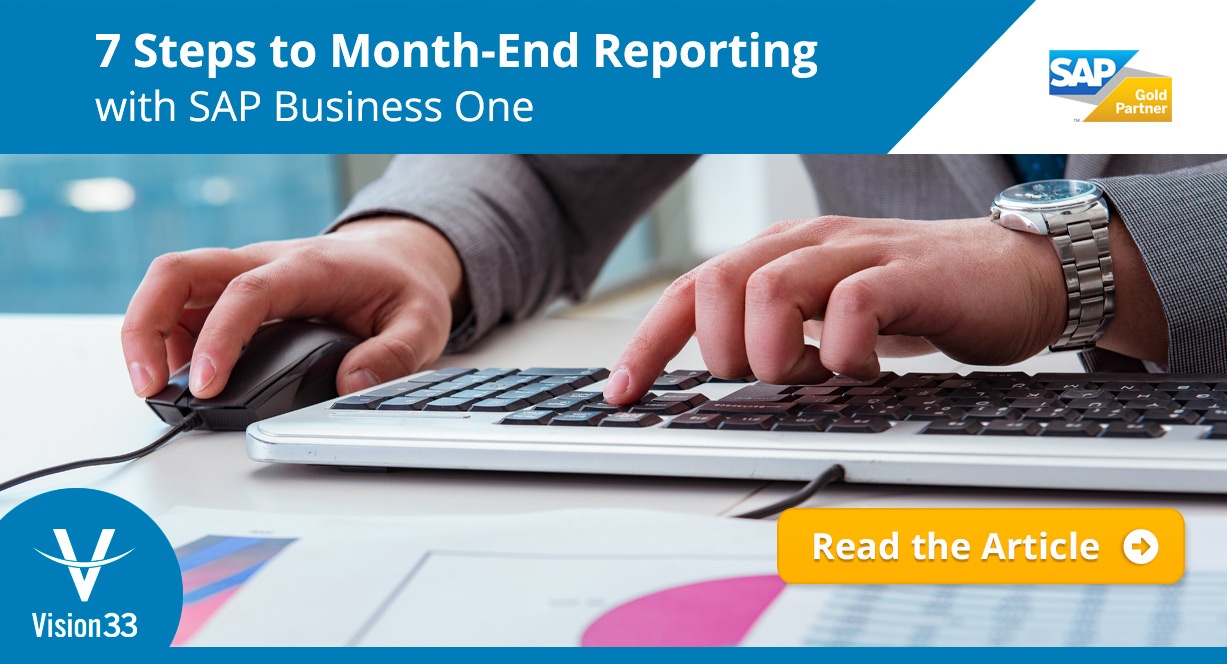RPA, ML, and AI: Which Financial Automation Does Your Organization Need?
Sage IntacctBusinesses wishing to optimize financial management should know the basics about three financial...

August 15, 2019
Blog > 7 Steps to Month-End Reporting with SAP Business One
Let’s face it – business ownership has its rewards, but it also comes with a lot of challenges and responsibilities. Chief among those responsibilities is maintaining current and precise accounting records to accurately gauge your company’s financial performance. Don’t lose sight of the importance of month-end closing procedures and the issues your accounting department faces.
Chances are, your accounting staff are dealing with tedious manual processing, including data matching and reconciliations. Some discrepancies may be unidentified and some items left open due to lack of time. Your accounting software may not provide a full picture of what’s really going on, and your staff may feel pressure to close the books in a rush.
So how can you make sure your general ledger is reconciled, your financial statements are spot-on and your books are in good shape? We recommend following the seven steps outlined below at the end of each month.
Reports include:
If you’re less than satisfied with your current accounting software or your month-end reporting processes, it may be time to consider a better system. The steps outlined above can be accessed automatically from an enterprise resource planning (ERP) solution like SAP Business One. SAP Business One is affordable, easy to use and quick to implement. It brings all aspects of your business – not just accounting and financials – together under one platform. Perhaps best of all, SAP Business One eliminates redundant data entry and produces meaningful reports, allowing you to make sound financial decisions about your company’s future.
We’re here to help. You’ve got enough to deal with, so if you’re curious about how SAP Business One can make your job easier, let’s chat. Drop us a line at contact@vision33.com.
Subscribe to our newsletter to receive our latest blog posts, case studies and ERP news delivered straight to your inbox.
Businesses wishing to optimize financial management should know the basics about three financial...
Robust dashboards and customizable reporting have given Mutual Vision’s finance team much-needed...
With Sage Intacct, Cresco has transformed accounting functions into true finance functions—giving...
Recieve our latest blog posts, case studies, and ERP news
delivered straight to your inbox.